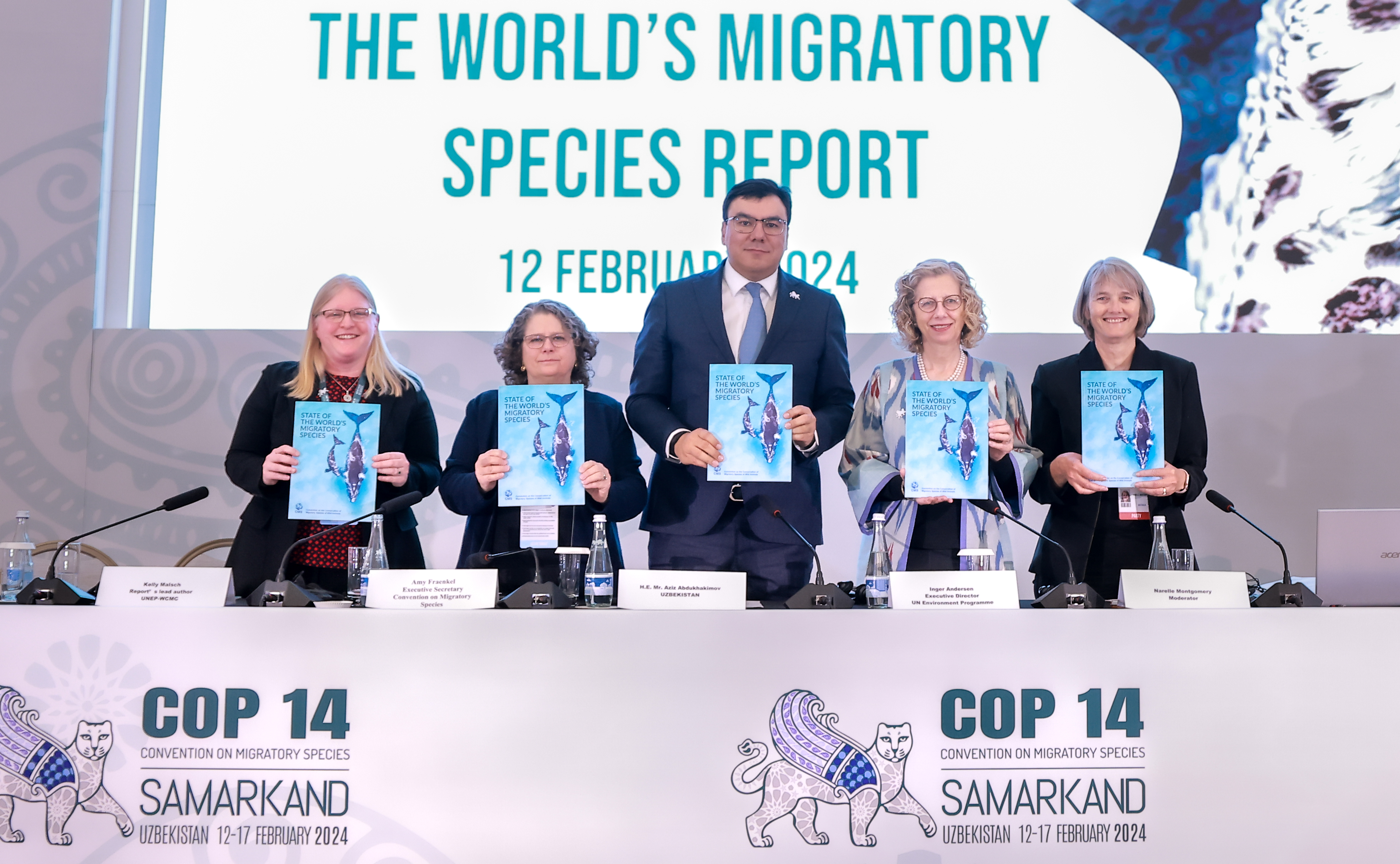
Within the framework of CMS COP14, the first ever detailed report on the state of migratory species in the world, threats to their existence, and measures taken to save them was presented in Samarkand.
The report "The State of Migratory Species in the World", prepared by environmental scientists from the World Conservation Monitoring Center of the United Nations Environment Programme (UNEP-WCMC), uses expert materials from institutions such as BirdLife International, the International Union for Conservation of Nature (IUCN), and the Zoological Society of London (ZSL).
The report focuses on 1,189 animal species that have been recognized by CMS Parties as in need of international protection and included in the Convention's list. The document also provides an analysis of more than 3,000 additional migratory species not included in the CMS.
"Today's report shows that unsustainable human activity threatens the future of migratory species—creatures that not only act as indicators of environmental change but also play an important role in maintaining the functioning and sustainability of our planet's complex ecosystems. The global community has the opportunity to translate the latest scientific achievements on the problems faced by migratory species into concrete conservation actions. Given the precarious situation of many of these animals, we cannot afford to delay action and must work together to implement the recommendations", said UN Under-Secretary-General and Executive Director of the United Nations Environment Programme, Inger Andersen.
Key points of the report:
• Almost half (44%) of migratory species are declining in numbers.
• Every fifth species of migratory animal on the Convention's list is at risk of extinction.
• 97% of the fish on the CMS list are endangered.
• The risk of extinction is increasing not only for migratory species but also for other species.
• Half of the territories of the migratory habitat do not have a protected status and experience negative anthropogenic impacts.
• Overexploitation and habitat loss due to human activities are recognized as the two biggest threats to migratory species.
• 3 out of 4 migratory species on the CMS list suffer from habitat loss, degradation, and fragmentation;
• 7 out of 10 migratory species on the CMS list suffer from overexploitation.
• Climate change, environmental pollution, and invasive species also have profound impacts on migratory species.
• 399 endangered migratory species are not included in the CMS list.
"Migratory species depend on a variety of specific habitats at different periods of their life cycle. They travel constantly, sometimes thousands of miles away. On their way, as well as in the destinations where they breed or feed, the animals face huge challenges and threats. When species cross national borders, their survival depends on the efforts of all the countries in which they live. This landmark report will help support much-needed policy action to ensure that migratory species continue to thrive around the world", said Amy Fraenkel, CMS Executive Secretary.
One of the key priority measures is to map and take adequate measures to protect vital habitats that serve as breeding, feeding, and stopping places for migratory species.
Highlighting the alarming situation of many species, the report also shows that recovery of populations and species, in general, is possible and therefore provides examples of successful policy changes and affirmative action, from local to international. Examples include coordinated actions at the local level, which reduced the illegal use of bird nets in Cyprus by 91 percent, as well as extremely successful comprehensive conservation and restoration efforts in Kazakhstan to reintroduce saiga, which was on the verge of extinction.











